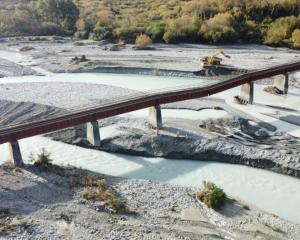
While similar time shifts take place around the world, the concept of daylight saving actually originated in New Zealand. The concept was first formed in the 1890s, although it would take some decades before the summer time shift became a reality.
Here's a bit of timezone history you might not be aware of.
It was invented by a New Zealand bug collector
George Hudson is credited with coming up with the idea for daylight saving time. A British-born entomoligist and astronomer, Hudson's shift work job gave him appreciation for after-hours daylight, as it afforded time more leisure time to collect insects. His initial idea, formed in 1895 and presented to the Wellington Philosophical Society, was for a two-hour daylight saving shift.
Hudson's idea gained support from MP Sir Thomas Kay Sidey, who put forward a daylight saving bill annually, starting in 1909. In 1927, when Hudson was 60, the Summer Time Act suceeded and clocks were moved forward an hour from the first Sunday in November to the first Sunday in March.
Hudson's collection of insects ended up being the largest in the country and is now housed in the Museum of New Zealand Te Papa Tongarewa.
It took quite some time to come into effect
Despite the Summer Time Act being passed in 1927, the change in hours wasn't very popular in New Zealand. In 1928, the Act was revised to a half-hour shift from the second Sunday in October to the third Sunday in March. It was again amended in 1929, when the half hour shift was fixed from to run from the second Sunday in October to the third Sunday in March every year. The period was extended yet again in 1933, running from the first Sunday in September to the last Sunday in April.
During the Second World War, emergency regulations extended daylight saving to cover the entire year - this was reviewed annually and continued until 1945, when what was known as NZ Summer Time (NZST) became NZ Standard Time. The old time standard, known as New Zealand Mean Time (NZMT) was then abandoned permanantly.
Daylight saving didn't reappear until the 1970s
The concept of daylight saving time as we know it today didn't come into effect until 1974, when it was trialled again for a year. This time, the time shift was one hour ahead of NZST and ran from the first Sunday in November to the last Sunday in February. Daylight saving time was officially introduced in 1975, but the dates were changed yet again, to run from the last Sunday in October to the first Sunday in March.
Not everyone agrees
While the 1974 trial proved popular with most New Zealanders, the shift in time didn't suit everyone. It was particularly unpopular with dairy farmers, who weren't pleased about having to get up in the dark all year round. One Northland dairying town, Ararua, pushed back against daylight saving and created their own "Ararua Time" independent of the rest of the country. The town refused to adjust its clocks for several years.
There have also been other ill-effects reported from extended daylight hours - in particular, from parents who have trouble getting young children to sleep. Research has also showed that losing an hour of sleep in spring can disrupt your circadian rhythm - and is also associated with a spike in heart attacks, more workplace injuries and increased cluster headaches.
In 1985, the Department of Internal Affairs undertook a survey of public attitudes towards New Zealand Daylight Time (NZDT), looking at its effects on work and recreation through different demographics. Despite objections from farmers, it found that 76.2 percent of the population wanted NZDT either continued or extended.
Daylight saving continues to have its detractors to this day. In 2019, a lobby group called "Take Back the Clocks" was formed and pushed for the country to adopt permanent 'summer hours' While there was little interest from politicians in New Zealand, similar lobby groups overseas gained support and the European Union voted to abolish the daylight saving system by 2021.
It has since been extended several times
Following the 1985 survey, a trial period of an extended NZDT was held from the second Sunday in October 1989 to the third Sunday in March 1990, with the public encouraged to write in with their views on the five-week extension. In 1990, this extension was made official in the Daylight Time Order 1990.
More recently, public debate in 2006 led to a petition from Nelson City councillor Mark Holmes and United Future leader Peter Dunne to extend NZDT for an extra three weeks. It gained more than 35,000 signatures and ended up being successful. In April 2007, the government announced that daylight savings would be extended by three weeks, for a 27-week period.
The following year, Research New Zealand surveyed 1006 members of the public and 494 dairy farmers about how the extended daylight saving period had affected them. The results found that 82 percent of respondants supported the extension, while 54 percent of dairy farmers also supported it.












